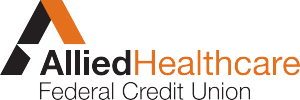
Protecting Your Identity from All Parts of the Internet
Most people don’t realize that the internet is made up of three layers, commonly referred to as the Surface Web, the Deep Web and the Dark Web. These layers are defined by who is using the Internet and how these individuals gain and share access with others. It’s important to understand all parts of the internet to help you know how to protect your identity.
The Surface Web
The Surface Web is public, meaning anyone can access. This is the part of the Web where people search, play and interact (games, social media and all websites available to you). What defines the Surface Web is the ability for information to be found (indexed) by search engines such as Google, Bing, and Yahoo so it can easily be made available to users. Hackers can gather data for malicious purposes from the surface web. For an example, a large amount of personal information can be obtained when social media privacy settings are set to public.
The Deep Web
The Deep Web is private. It cannot be indexed by search engines and often requires a username and password to access. You are interacting on the Deep Web when you login to your online banking, make purchases with stored payment information, or access your company’s intranet.
The Dark Web
The Dark Web is anonymous. It’s a subset that makes up about 5% of the Deep Web. It is a place where criminals and law enforcement work anonymously, with drastically different goals. The Dark Web is only accessible through a specific search engine, and the main difference is that computers using this search engine are disguised and users can interact without risk of being identified or exposed. Hackers and cyber thieves often visit the Deep Web to buy and sell personal information that may have been obtained in a data breach or by other means. Criminals buy and sell this information to commit fraud.
There are steps that you can take to minimize your risk of becoming a victim of identity theft or fraud.
- Change your passwords. This should be a regular practice, but it is immediately needed if you have received a data breach notice that your email address and/or your website login information (username and password) for a particular website may have been compromised in a data breach.
- Monitor your banking transactions, credit report, and postal mail. Looking at your banking transactions regularly can help prevent fraudulent transactions from getting out of hand. Review your credit report at least quarterly and watch for suspicious mail that might indicate this type of activity.
- Sign up for Free ID Theft Protection with AHFCU. If you are a Value or Dividend Checking Account holder, you are already eligible for FREE Identity Theft Recovery Services. Click here to learn more about AHFCU’s Identity Theft Recovery Services. Find out more about our Value and Dividend Checking Accounts and their FREE ID Theft Recovery Services here.



